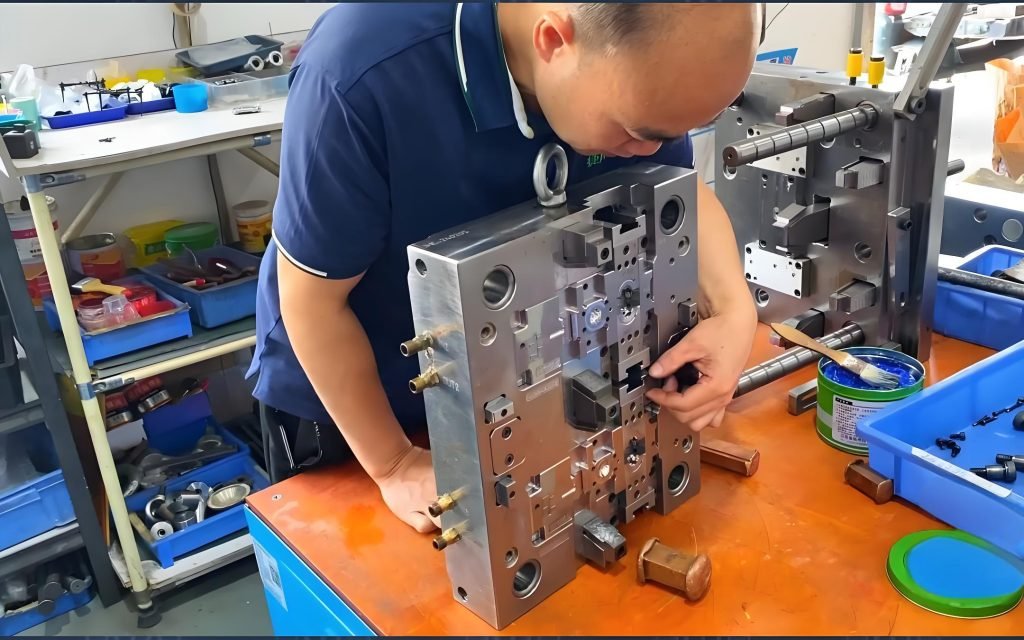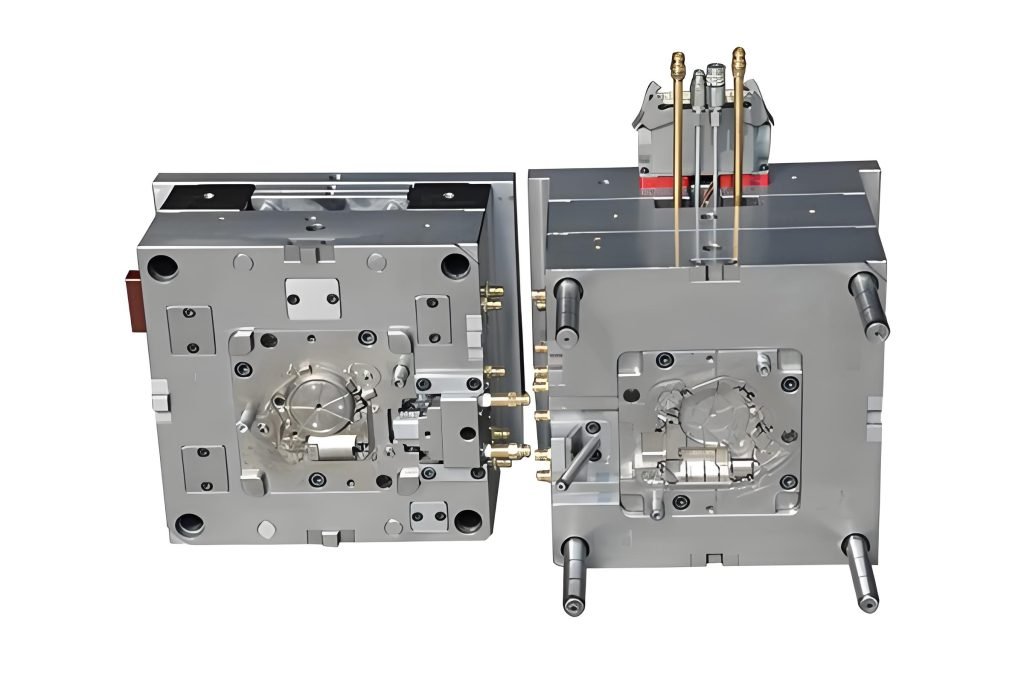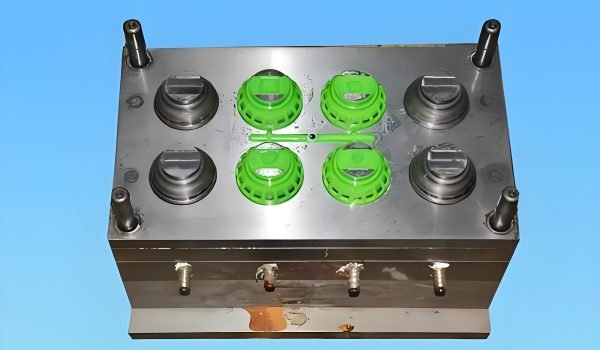Injection molding is a typical method of rapid production of large volumes of plastic components. It is used for things like packaging, car parts, medical devices, and lots of other products of daily use. However, every step in the injection molding cycle must happen with the right control and time to make the molding work properly.
Plastic injection molding cycle time is a key measure to consider. This is because it influences efficiency of the process, its cost, and quality of the parts. Therefore, it is still important to think about these early on to meet cost and quality goals when moving to full production.
Here we will explain the different stages of injection molding cycle time and share easy ways to reduce cycle time in injection molding to boost productivity.
Key Phases of Injection Molding Cycle
Here are the key phases of injection molding cycle.
Clamping
Clamping is the first step in the injection molding process. It means closing the two halves of the mold tightly before the plastic is injected. The mold is held shut with strong force to stop it from opening when the hot plastic is pushed in. Even more, this tight seal shapes the plastic as it cools.

If the mold does not stay closed properly, plastic can leak out and cause problems like extra thin edges or incomplete parts. Clamping makes sure the right forms fitting and sizes too. Performing clamping properly also enhances the quality of the parts and smooth operations of the entire process. It also aids in time saving and elimination of errors.
Injection
After the mold is closed tight, the injection step starts. Plastic pellets are heated until they melt into a thick liquid. Then, a screw or plunger pushes this melted plastic into the mold through a small opening, using high pressure.
The heat and pressure have to be just right.
- If it is too cool, the plastic won’t flow well which will be causing holes or misshaped parts. If it is too hot, the plastic can burn or change color.
- At the same time, if the pressure is too low and the mold won’t fill all the way. If it is too high then the mold or parts might get damaged.
Finding the right balance helps make strong and accurate plastic parts.
Cooling
The cooling phase starts after the plastic is pushed into the mold. The mold stays closed to keep pressure on the part while it hardens. This helps prevent problems like warping or shrinking that can happen if the part is taken out too soon.
How long the part needs to cool depends on different things including:
- The type of plastic
- Its shape
- Plastic thickness
Letting the part cool completely is important to keep its shape and strength. Many molds have built-in cooling channels, and sometimes water or air is used to cool the part faster.
Good cooling helps make parts that are consistent and reliable. It also keeps the production running smoothly and efficiently.
Mold Opening
Once the part has cooled, the mold opens so the part can be taken out. The machine releases the force holding the mold shut.
One side of the mold slides away from the other, creating space to see the finished part inside. This movement is powered by systems like hydraulics or mechanical levers.
Opening the mold carefully is important to avoid damaging the part or the mold. It also gets everything ready for the next step which is pushing the part out and starting the next cycle.
Ejection
You need to push the finished parts out of the mold after it opens. This is called ejection. Small pins or plates built into the mold gently push the part out of its shape.
The timing and pressure have to be just right. Too hard pressure can break the part, too soft might not push it out completely. Some molds also use air or special tools to help release tricky parts.
In many modern factories, robots often grab the parts automatically. This makes the process faster and more consistent.
Closing
The clamping unit of machine pushes the two halves of the mold back together with the right amount of force during this step. This makes sure the mold is properly closed and lined up, ready for the next round of injection molding.
Calculating Molding Cycle Time
You first need to measure the cycle time injection molding correctly to improve it. When it comes to know how to calculate cycle time in injection molding, you need to consider the total injection mold cycle time is the sum of all the steps involved. It includes:
- Injecting the plastic
- Cooling
- Holding pressure
- Pushing the part out
- Opening and closing the mold.
Manufacturers can find out where to make changes to speed up the process and work more efficiently by timing each step carefully. Using tools like timers or software can help track these times accurately and boost productivity.
Common Factors That Can Affect Timing of Injection Molding Cycle.
Here are some of the common factors to look at.
- Plastic Material
Different plastics melt and cool at different speeds. Some flow into the mold quickly. While others need more time and care. Picking the right plastic can make the whole process faster or slower.
- Pressure System
The pressure used to push the plastic into the mold needs to be steady and strong enough. If the pressure changes too much, it can cause defects like extra plastic edges or incomplete parts. It slows things down and hurts quality.
- Cooling System
Good cooling helps the plastic harden faster. If cooling is uneven or too slow, it can make the cycle longer and cause problems like warping or shrinking.
- Mold Design
A well-made mold lets the plastic flow smoothly, vents air properly, and cools evenly. Poor design, like tight spots or bad venting, can slow the cycle and lower part quality.
- Machine Settings
Settings like how fast the plastic is injected, how tightly the mold is clamped, and how long cooling lasts all affect speed and quality. Adjusting these based on the plastic and part helps keep things running smoothly.
How to Optimize Time for Injection Molding Cycle?

Following these simple tips can help make each injection molding cycle faster and produce better parts.
Improve Mold Design
Make sure the mold has easy paths for the plastic to flow and good cooling channels. Proper venting and even wall thickness help parts fill smoothly and harden evenly without problems.
Speed Up Clamping and Opening
Use machines that close and open the mold quickly. Adjust the clamp force to be just enough to hold the mold shut without wasting time.
Make Injection Faster
Set the injection speed and pressure to fit the type of plastic and part shape. This helps fill the mold quickly without causing defects like burns or too much pressure.
Use Holding Time Wisely
After the mold is full, holding pressure stops the part from shrinking. However, don’t hold pressure longer than needed, or it will slow down cooling and the overall cycle.
Smooth Mold Opening and Closing
Keep the mold opening and closing steady and smooth to avoid parts getting stuck or the mold being out of line. Regular maintenance and precise machine movement help keep things running safely and on time.
Speed Up Your Production with Fecision’s Injection Molding Experts!
In plastic injection molding, how fast each cycle runs is very important. It also affects how efficient you are, how much it costs, and how many parts you can make. We can make parts faster and cheaper. We do so by understanding and improving every step from injecting the plastic to closing the mold.
Fecision also specializes in making high-quality prototype parts quickly while keeping mold costs low. Our experience with fast prototyping and mold making helps clients find the best ways to shorten cycle times. It happens by improving mold design, choosing the right materials, and adjusting the process settings.




